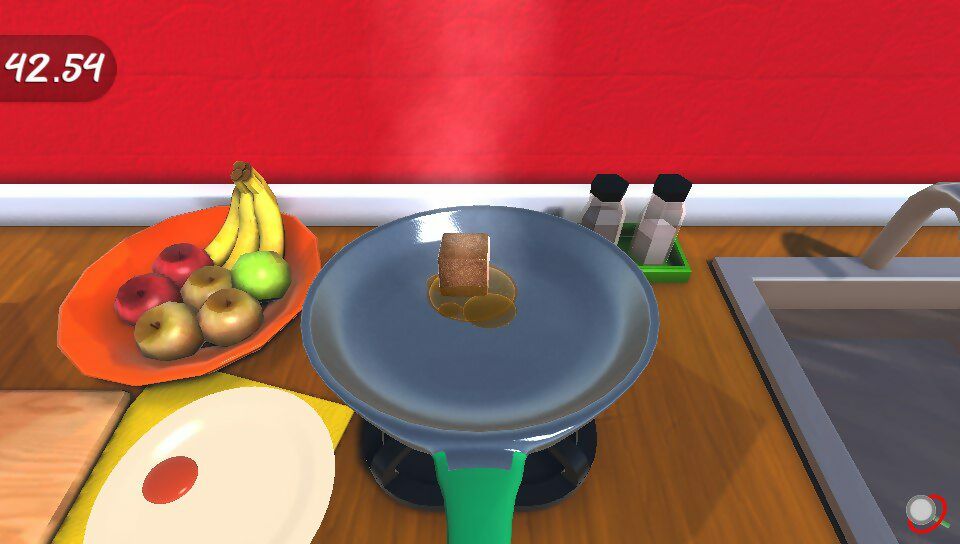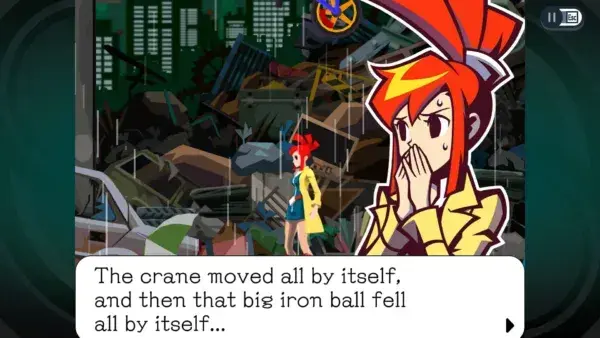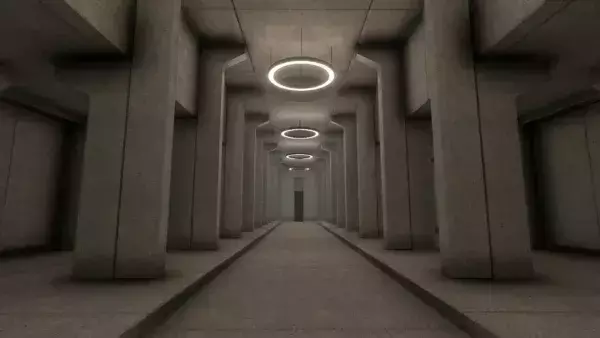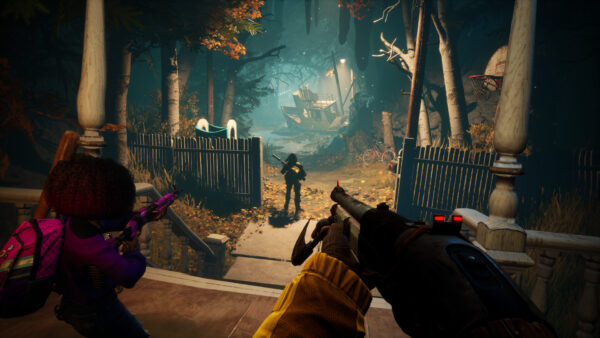
The PlayStation Vita wasn’t supposed to be hacked. Sony’s diamond in the rough released in 2011, with the company having learned its lessons from the PSP’s mistakes. Released in late 2004, the PlayStation Portable helped usher in a new generation of handheld gaming.
But it was cracked early: the PSP’s initial firmware, 1.00, easily allowed hackers to run unsigned code. Sony would spend years trying to block hackers, but their attempts were futile; the system was insecure, and insecurities are a hacker’s favourite toy.
With the console code disassembled within months of its US release, the PSP played host to a growing homebrew scene in the mid-2000s – key titles included Nazi Zombies, Lamecraft, Wagic, and Kurok. “The PSP defined my childhood,” says prominent hacker Andy ‘TheFlow’ Nguyen.
After seeing his father modify his console with a Pandora battery, Nguyen’s eyes were opened to both hacking and homebrew. Just twelve years old and a self-professed bad student, the PSP ignited his interest. “I was so amazed; I immediately started programming,” he says. “I was driven by my dream of writing my own custom firmware.”
Nguyen learned fast. After months of releasing plugins and learning through research, he released his own custom firmware, 6.20TN, the first public jailbreak for the PSPgo. A few years later, he made the move to Sony’s successor, creating some of the most important homebrew utilities on the Vita – and bringing a whole new lease of life to a handheld that suffered poor treatment from its creator.
The PlayStation Vita wasn’t supposed to be hacked, but it’s those dedicated hackers and coders who are still keeping the dream of a device with huge amounts of unfulfilled potential alive.
Between 2012 and 2016, Nguyen and other members of the hacker group Team Molecule cracked the Vita wide open. “We only hack things we love,” says fellow Team Molecule member, Yifan Lu. “We really care about the device; we banded together; we shared the same passion… we [even] designed our own development tools to rival Sony’s. We spent most weekends reverse-engineering Vita code.”
In 2016, Team Molecule released HENkaku, a web-based exploit that allowed Vita owners to run homebrew. Thanks to the team’s reverse engineering and Nguyen’s tools, a dedicated community had formed around a device that had been overlooked by mainstream gamers.
THINKING UPSIDE DOWN
One of the developers who joined the Vita’s growing homebrew community was Vagelis ‘LazyOx’ Oganesov, who’s currently making My Bakku Pakku – a mash-up of Super Mario and Katamari. “I picked up a PSP because of the homebrew but, well, it’s old, so I decided to pick up a Vita,” Oganesov says.
Initially purchasing the system for emulation purposes, he changed focus after discovering a few homebrew titles made using his engine of choice: Unity. “I’ve always been a creative person, and when I discovered Unity was working on Vita, it just clicked. Unity equals game. Make the game, put it on Vita.”

Despite the Vita’s limitations, VitaHEX’s The Hallway, a portable rendition of P.T., gets the look and feel just right.
Before My Bakku Pakku, Oganesov started out with a smaller project called Frying Master – a re-creation of Mario Party’s Sizzling Stakes minigame, in which the player has to fry all six sides of a meat cube before the time runs out.
With this first game under his belt, Oganesov decided to move on to a more advanced project. “I’m primarily a mobile developer,” he tells us. “I’m used to the process of optimising my games, but when [I started on My Bakku Pakku], it was running at 15 frames per second.”
Having previously worked on SouzaSim, a mobile racing game, Oganesov brought experience of optimising for handheld formats to the new project.
All the same, the early stages of My Bakku Pakku’s development proved challenging: even with a visual style designed around the Vita’s GPU, slowdown persisted in early builds. “I know if you have real shadows, not baked shadows, [lighting] effects, and a high-resolution image, it’ll start lagging,” Oganesov says. “But on Vita, I couldn’t find why.”
Theoretically, a simple 3D platform game should have worked perfectly well on the Vita, but the addition of Katamari-style physics – where the player pushes a sticky ball around a map, collecting objects – proved troublesome for the system.

Fallen Knights is in early development, but it’s already starting to look a bit like its inspiration, FromSoftware’s Souls series.
“After I designed the original graphics build, when I was originally testing the game, I didn’t have any objects,” Oganesov recalls. “It was running fine, flawless. I started putting in objects, and it would just slow right down. I thought it was bug-related! I was constantly, like, ‘Why?’ The graphics are so simple: there’s no lighting, there’s no nothing! I’m literally hitting my head against the wall.”
Since having a lot of objects on screen was a key focus of My Bakku Pakku’s design, Oganesov focused his energies on optimising the game for the Vita’s hardware. “In the game, you pick up objects, they disappear, and they fill your backpack,” he explains. “The problem was CPU usage… but it plays well now.”
It’s still a work-in-progress title, but Oganesov has hopes for My Bakku Pakku beyond a curio on a hacked system – the ambition is to bring the game to other mobile formats should it work out well on Vita. It’s proof that, in a realm known for its piracy and other nefarious dealings, there’s also something wholesome and positive emerging from the handheld hacking space.
PUT A SPELL ON YOU
Another mobile developer, 29-year-old Sakis (better known as VitaHEX), has also spent the past couple of years trying to get the most out of the Vita. “I have a great amount of experience from my work on mobile games,” says Sakis. “Technically, Vita is just that: a mobile system, but it’s not giving you its full power.”
Since 2017, Sakis has been making impressive games that push the Vita to its limits. Starting with Crazy Traffic Jam 3D, one of the first 3D homebrew titles made for the Vita, VitaHEX’s projects have evolved into some of the most technically accomplished games available on the system. “Crazy Traffic Jam 3D was built in Lua Player Plus, a simple programming tool built for simple functions,” Sakis says. “It couldn’t handle 3D rendering at all.”

Created by FantaHG, Speedrun is a fast-paced 3D platformer.
Like so many other homebrew developers, Sakis has since moved to Unity. This has helped him create some incredible projects, like a remake of Hideo Kojima and Guillermo del Toro’s horror masterpiece, P.T. Sakis has worked on remaking the AWOL Silent Hills demo for the Vita; titled The Hallway, this portable P.T. is still in development, with about ten percent of the original game faithfully recreated.
“I worked on most of the assets from scratch,” Sakis says. “I studied the [original] game – I worked on every 3D model based on screenshots and gameplay videos.” Despite being on a far less powerful system than its home on PS4, the downscaled Vita version manages to recapture the original game’s eerily dilapidated location.
Creating such a detailed environment required optimisation: with so many objects around and atmospheric lighting aiding the mood, The Hallway required a lot of development streamlining. Its level of detail had to be strictly controlled; aside from a handful of key scenes, most of the game’s lighting was pre-baked, and more mobile-focused shaders were also used.
“Real-time lighting was a big hit for the performance,” Sakis says. “The Vita has a powerful GPU, but Unity doesn’t let you take full advantage of it. I decided early on to bake all the game’s lighting, only using the extra GPU budget to keep important lights working in real-time. The game has improved a lot since its first release.”

My Bakku Pakku – it’s a great name.
As work on The Hallway continues, the VitaHEX brand has also expanded, with numerous projects being worked on in tandem. Most recently, Fallen Knights, Sakis’ take on the Souls franchise, has been the talk of the homebrew scene.
While still early in development, Sakis hopes he can create a decent Souls-like experience on Sony’s handheld. “It’s a long road ahead, and my free time is very limited, but I hope to get a good Dark Souls experience [on Vita],” he says.
PHYSICAL PROJECTS
The homebrew scene isn’t limited to the digital sphere, though. While a high cost limits production of physical games and hardware in this semi-professional world, recent years have seen the release of more items we can actually hold in our hands.
As we saw in Wireframe #7, the Sega Dreamcast is a goldmine of physical homebrew games released well after the format’s death – and even fan-made hardware, like DCHDMI, designed to enhance the system’s playback on modern TVs. But those projects aren’t common: they require a dedicated fanbase, a lot of time and, most importantly, funding.
One such project making waves in the Vita homebrew community is the PSVITA Dock, a physical project inspired by the Nintendo Switch and aiming to turn Sony’s handheld into a home console. It’s like the PlayStation TV, but with higher compatibility for games.

The PSVITA Dock houses a Raspberry Pi which helps connect the Vita to a television.
Like those homebrew games mentioned earlier, the PSVITA Dock is being made by dedicated fans and tinkerers: Croatian developer xCorra, along with a couple of other collaborators, managed to raise over £13,000 for the hardware on Indiegogo in early 2019.
“In the community, I’m just called The Dock Guy,” xCorra laughs. “I talk to other developers – they like my work, they go, ‘Oh, you’re The Dock Guy!’ At the start, I was an unknown who just burst onto the scene, showed off an idea, and asked for money. I had to prove myself: I made my own subreddit, YouTube videos – I updated the Indiegogo 15 times.”
As he continued work on the Vita dock, improved the internals, and polished the software, the community took a liking to the project. “The biggest change [from the start] is doubt,” xCorra says. “Doubt is amazing: at the beginning, all I’d get were floods of questions. ’What’s the latency?’ ‘How durable is the plastic?’”
Trust is hard to gain, especially when you’re asking for money. Many were confused by the premise: PSVITA Dock is essentially a plastic shell housing a Raspberry Pi. Using a specialised version of a USB Streaming plugin coded by another hacker, Xerpi, the hardware interfaces with the RPi running VLC Media Player, and allows players to slap their handheld into an attractive slab of plastic and play their Vita on a TV. Simple.

Crazy Traffic Jam 3D is an infinite runner with basic power-ups. Released in 2017, it shows how far the system’s homebrew games have come.
“It’s improved a lot over time,” says xCorra. “At the start, we could only get 30 frames per second. [Vita] essentially uses the USB 2.0 data limit so we couldn’t have 60fps at all. We all worked together, changed the code a bit, and made an optimised custom plugin for the dock.”
For 60fps, certain sacrifices had to be made; PSVITA Dock plays back 60fps games at 864×488 resolution instead of the system’s native 960×544, while games that run at 30fps or below are displayed in their native resolution. As xCorra adds: “Most 60fps games don’t run at native resolution anyway; I don’t think [80% of the resolution] is too far for double the frame rate.”
VITA NOVA
Vita homebrew is still going through growing pains. Controversial game jams like VitaJAM2019 and rampant piracy has hurt the image of a blossoming scene, but it’s clear the PlayStation Vita is living up to the potential the hardware had inside it all along – even if Sony itself gave up on the device long ago.
It’s not too harsh to say the Vita was abandoned by its creator, but thanks to a dedicated homebrew scene, new life is being breathed into it.





